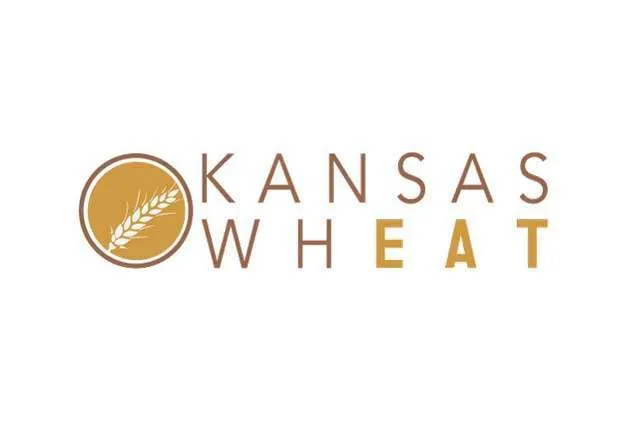For audio version, visit kansaswheat.org.
Brief moments of providence in our everyday lives can take our breath away — the sun breaking through the clouds after a storm or a newborn calf standing for the first time. For K-State wheat breeder Dr. Allan Fritz, those moments happen in wheat fields, picking out the breeding lines that show enough promise or durability to become the next great wheat variety. And from a disastrous inadvertent chemical application to soaring through the breeding program, the next variety of hard red winter (HRW) wheat from Kansas State University has officially arrived – KS13DH0041-35.
“We’re extremely excited to announce the advancement of the KS13DH0041-35 line for release as an official variety,” Fritz said. “It’s thanks to divine providence and constant vigilance that this still-to-be-named HRW variety is now ready to go to work for Kansas wheat producers.”
In 2014, the soybeans planted ahead of the wheat trials in Ashland were sprayed with what was supposed to be a routine herbicide. But, the chemical was contaminated, which was extremely detrimental to wheat production the following year. Fritz lamented the program lost essentially half of the breeding program at that location in 2015.
“I always have this prayer about, ‘Please, God, just show me the plants that are here, and that I should see. Draw my attention to the unique things, that are valuable, that have worth,’” Fritz said. “That year, it was more, ‘Just let there be something here that has value and worth and that can be useful for our producers.’”
And there was. With just 47 head rows in the field from its population, a doubled haploid line survived the chemical application. Fritz kept just three of those 47 head rows from that population in addition to other material from the Ashland location to advance through the K-State breeding program.
“After a couple of years, it was beating everything and doing it consistently,” Fritz said. “As we got to elite testing, it won the K-State breeding program’s elite trial by three to five bushels per acre for three straight years.”
As with all new varieties, Fritz and the K-State wheat breeding team put this new line to the test. The upcoming variety has higher average yield compared to commercial checks tested over the last three years. Yield potential is at the very top end, beating Zenda by 10 bushels per acre over the last two years and Bob Dole by seven bushels per acre.
The line is taller, but not Bob Dole tall, with excellent straw strength. The line also has excellent leaf rust resistance, good resistance to tan spot and intermediate resistance to fusarium head blight and stripe rust. The farinograph stability is less than the target but it has maintained good loaf volumes and holds its protein content well.
The upcoming variety has also performed well in a multitude of crop rotations and management styles, including planting after soybeans as well as after corn and in both conventional and no-till programs. The line is only intermediate on acid soils, so it is not a good fit for low pH soil.
“It’s just an overall workhorse variety that is what you would want as the foundation of your production,” Fritz said.
As this line moved through the breeding program to become an officially released variety, its durability also provided Fritz with a constant reminder of the power of faith as his wife’s early-onset dementia advanced.
“Having grown up on a farm, there is this whole realization that you can do everything right. You can make all the best plans, you can fertilize properly, but you are still at the mercy of the weather conditions and all of those things,” Fritz said. “We are relying on something beyond just what we can do ourselves.”
While no one can control the weather, the K-State wheat breeding program – supported by a collaboration between K-State, the Kansas Wheat Commission and the Kansas Wheat Alliance – works to set producers up for agronomic success. The funding from wheat farmers is used for the operation of the program, including staff time to plant and harvest more than 20,000 yield plots per year, equipment purchases and upkeep, and travel to plots like the ones in Ashland. The partnership also supports the adoption of new technologies to decrease development time, like the doubled haploid process that produced this new variety.
Combined, this work results in tested varieties that serve producers for years. Fritz compared this latest release to others from the K-State program that have led the state in production, quality and acreage, including Overly, Fuller, Everest and Bob Dole.
“There’s just been this flow of material through the breeding program, and it’s always fascinating to me to look back at the pedigrees and see the parents that pull through and how they become the foundation for the next round of varieties,” Fritz said, crediting the continuation of work from himself and previous K-State wheat breeders like Rollie Sears and Elmer Heyne. “You see that stream of effort and work to continually push the crop forward to make better varieties.”
“For me, in my program, in my career, I have found the providence in this variety as a culmination of that effort. With all of that history, I believe this variety has tremendous worth for our producers.”
###
Written by Julia Debes, Kansas Wheat


